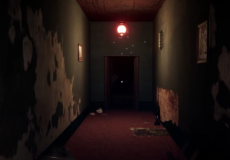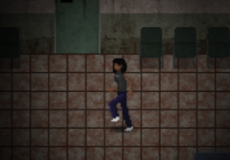

Prison Escape Simulator Dig Out
Advertisement
In Prison Escape Simulator Dig Out the player takes the role of an inmate determined to dig a tunnel to freedom. The first stage involves identifying a discreet starting location within the cell. This could be an area under the bed, a loosened floor tile, or a hidden corner near the plumbing. Choosing the wrong spot risks immediate exposure during routine inspections. Guards walk their routes on a predictable schedule, but any deviation can catch the player off guard. For this reason, early planning is critical to ensure that digging sessions take place only when the cell is unobserved.
Advertisement
Similiar games
In Prison Escape Simulator Dig Out the player takes the role of an inmate determined to dig a tunnel to freedom. The first stage involves identifying a discreet starting location within the cell. This could be an area under the bed, a loosened floor tile, or a hidden corner near the plumbing. Choosing the wrong spot risks immediate exposure during routine inspections. Guards walk their routes on a predictable schedule, but any deviation can catch the player off guard. For this reason, early planning is critical to ensure that digging sessions take place only when the cell is unobserved.
Securing Tools And Clues
Digging by hand is inefficient and risky, so acquiring tools is one of the main priorities. The player can search the prison for usable items, trade with fellow inmates, or bribe guards willing to make discreet exchanges. The better the tools, the quicker the tunnel progresses. Illumination is equally important for working underground, and light sources must be found or traded for as well. Alongside equipment, the player should collect information such as maps, coded notes, or inmate rumors, which may reveal weak points in the prison’s construction or safe areas to aim toward.
· Identify a safe tunnel entry point
· Acquire digging tools from various sources
· Obtain lighting for underground use
· Search for maps or coded hints
· Hide all escape items from inspections
Modifying The Cell For Concealment
Once digging begins, the player must keep the cell looking untouched. This can involve placing removable floor sections, using hidden covers for the tunnel entrance, or setting up containers to store or dispose of excavated soil. Without these measures, guard inspections will eventually uncover the operation. The prison economy allows for the purchase or trade of concealment materials, making it possible to continue digging without raising suspicion. Investing in cell modifications early can significantly extend the time available for tunnel construction.
Managing Space And Provisions
The escape plan requires long hours of work, and the player must remain prepared for sustained effort. Food, water, and other necessities should be stored inside the cell, ideally in a way that does not interfere with digging. Shelving units, storage boxes, and compact refrigeration can help keep resources organized. A well-arranged cell supports survival and ensures that digging activities can proceed without unnecessary interruptions caused by disorganization or lack of supplies.
Avoiding Discovery And Completing The Escape
The closer the player gets to the outside, the greater the risk of being caught. Any unusual noise, changes to the cell layout, or suspicious behavior can trigger a search. Being discovered may result in losing all tools, the tunnel being filled in, or the inmate being relocated to a high-security section. Avoiding these outcomes depends on working quietly, managing time precisely, and maintaining a perfect disguise for all escape-related activities. If these conditions are met, the tunnel can be finished, and the player can finally make their escape.
Discuss Prison Escape Simulator Dig Out




















